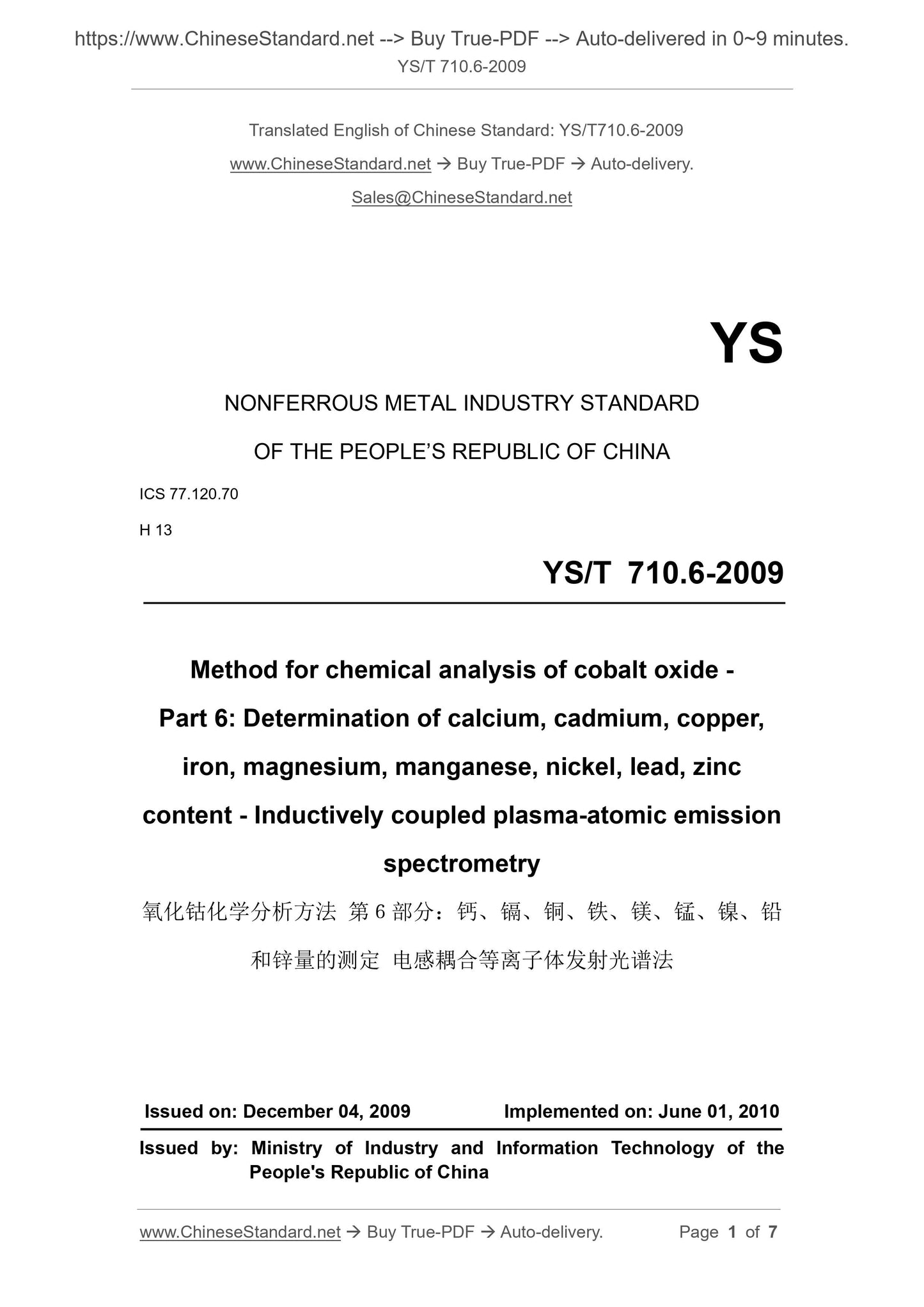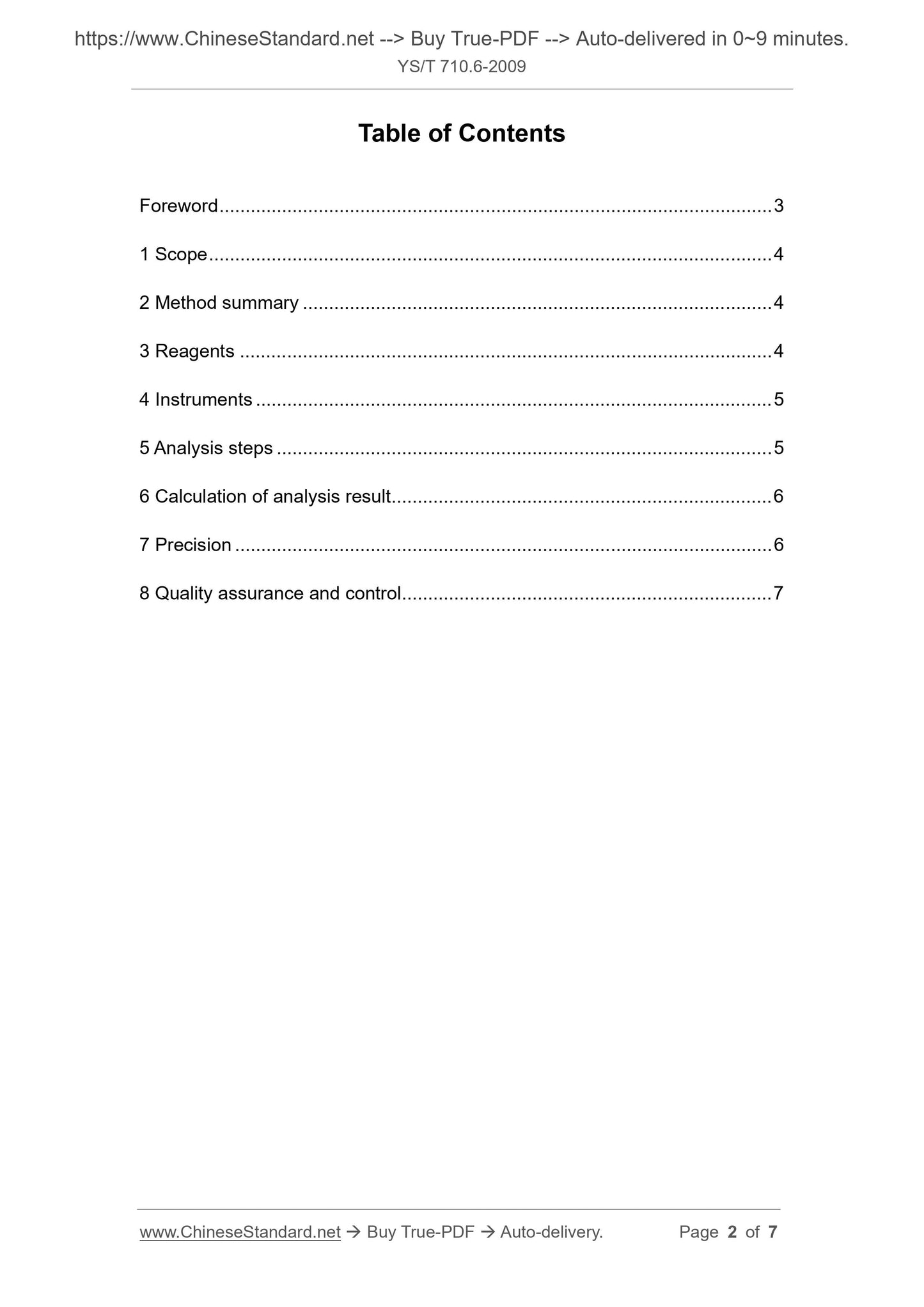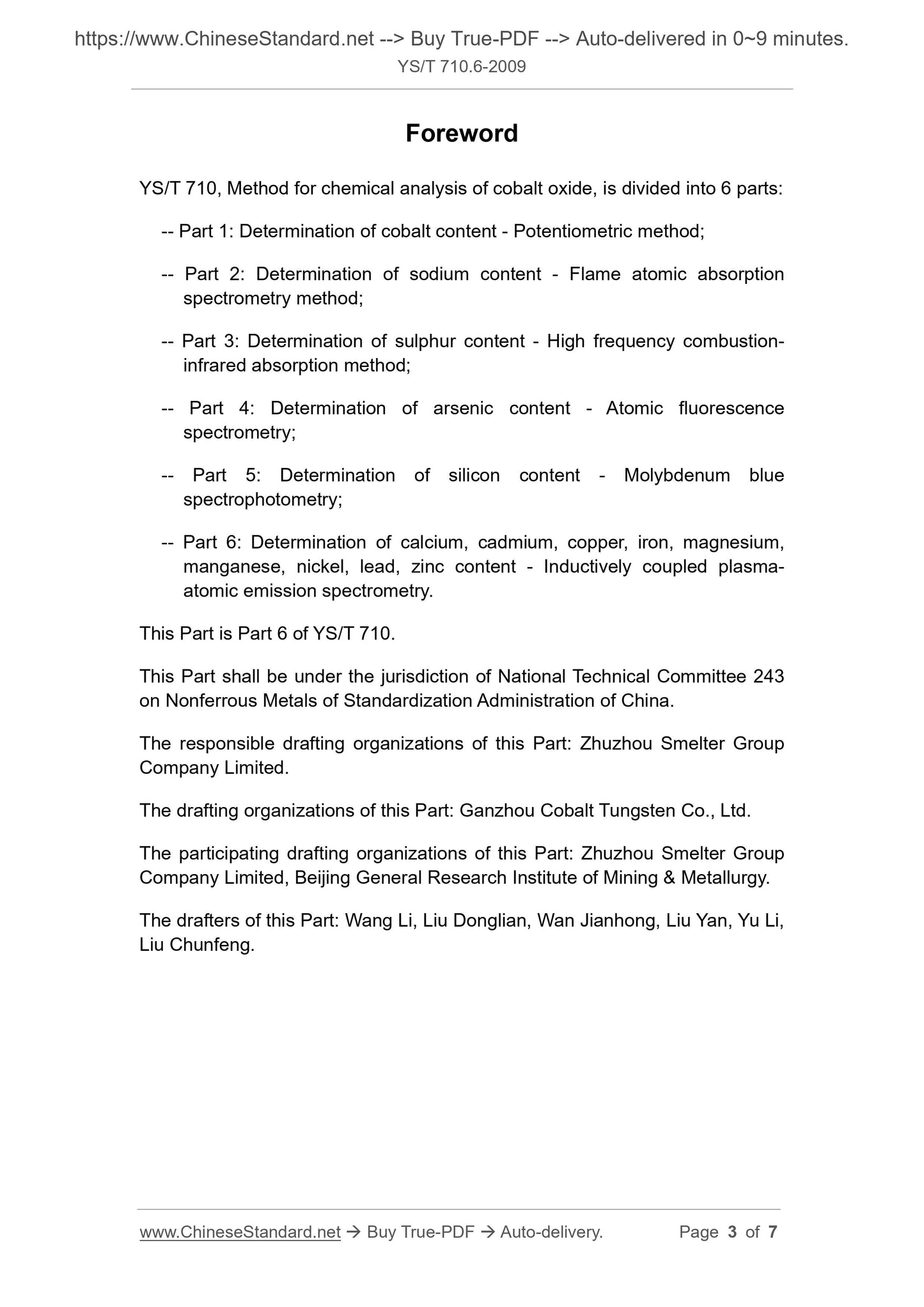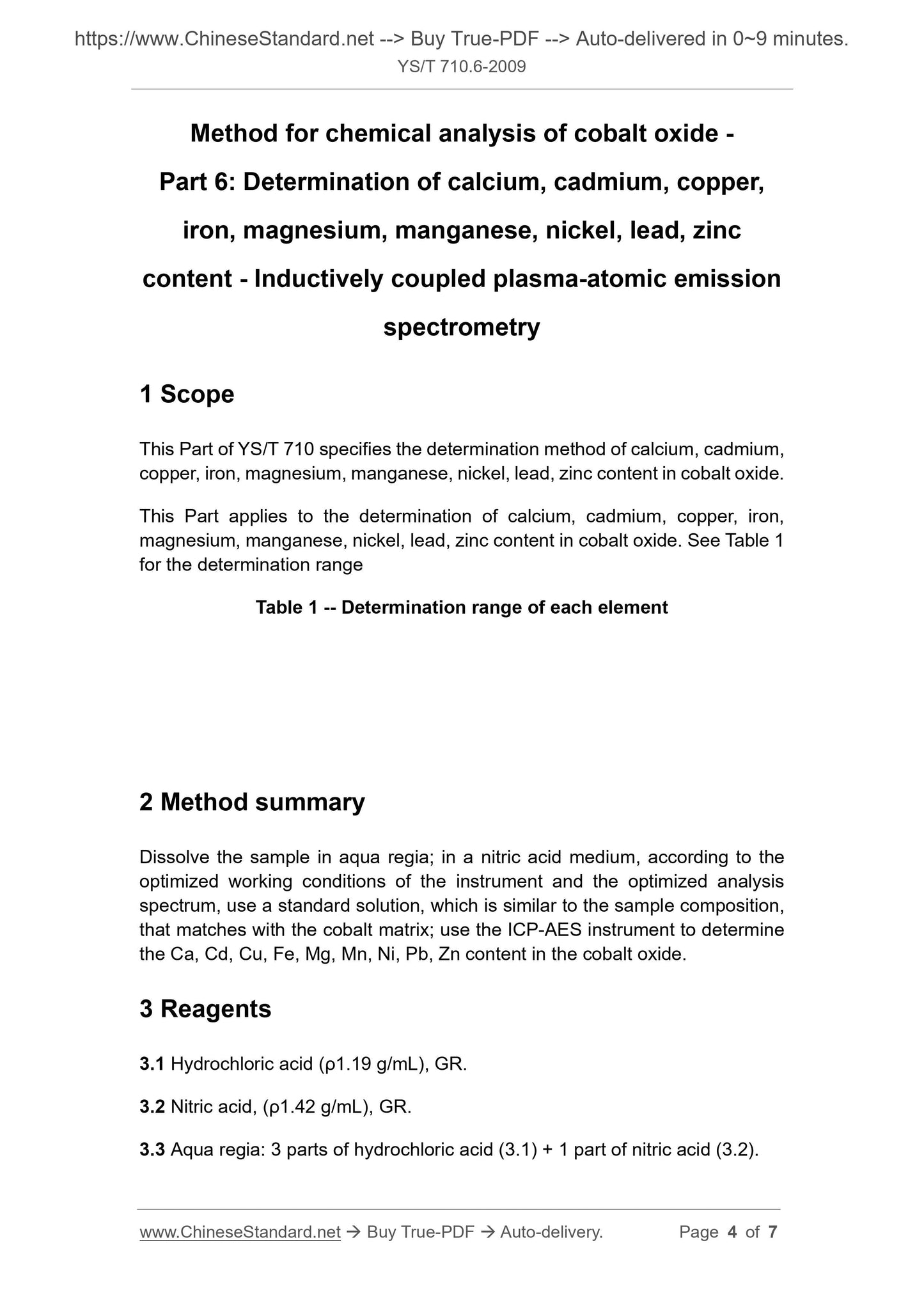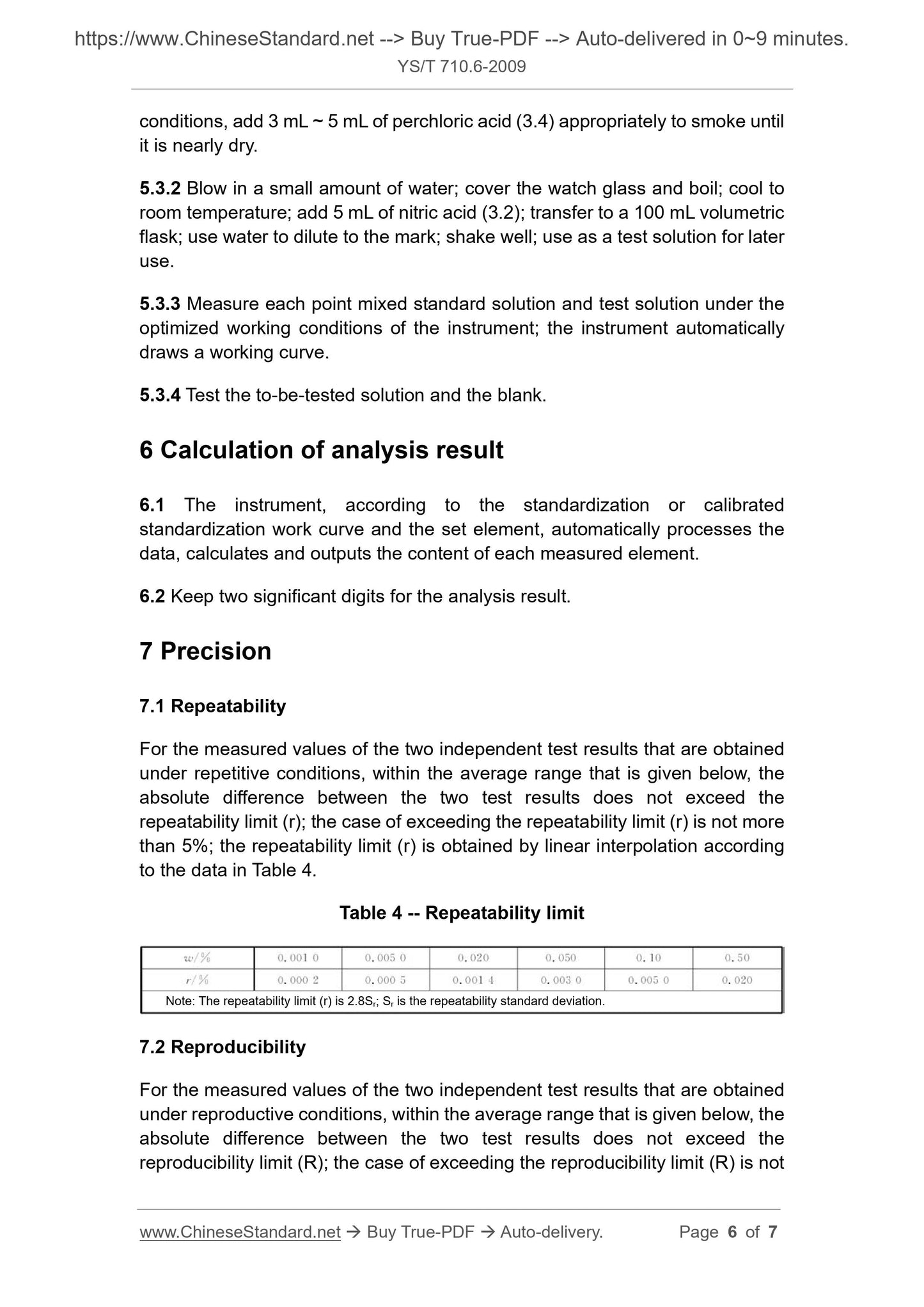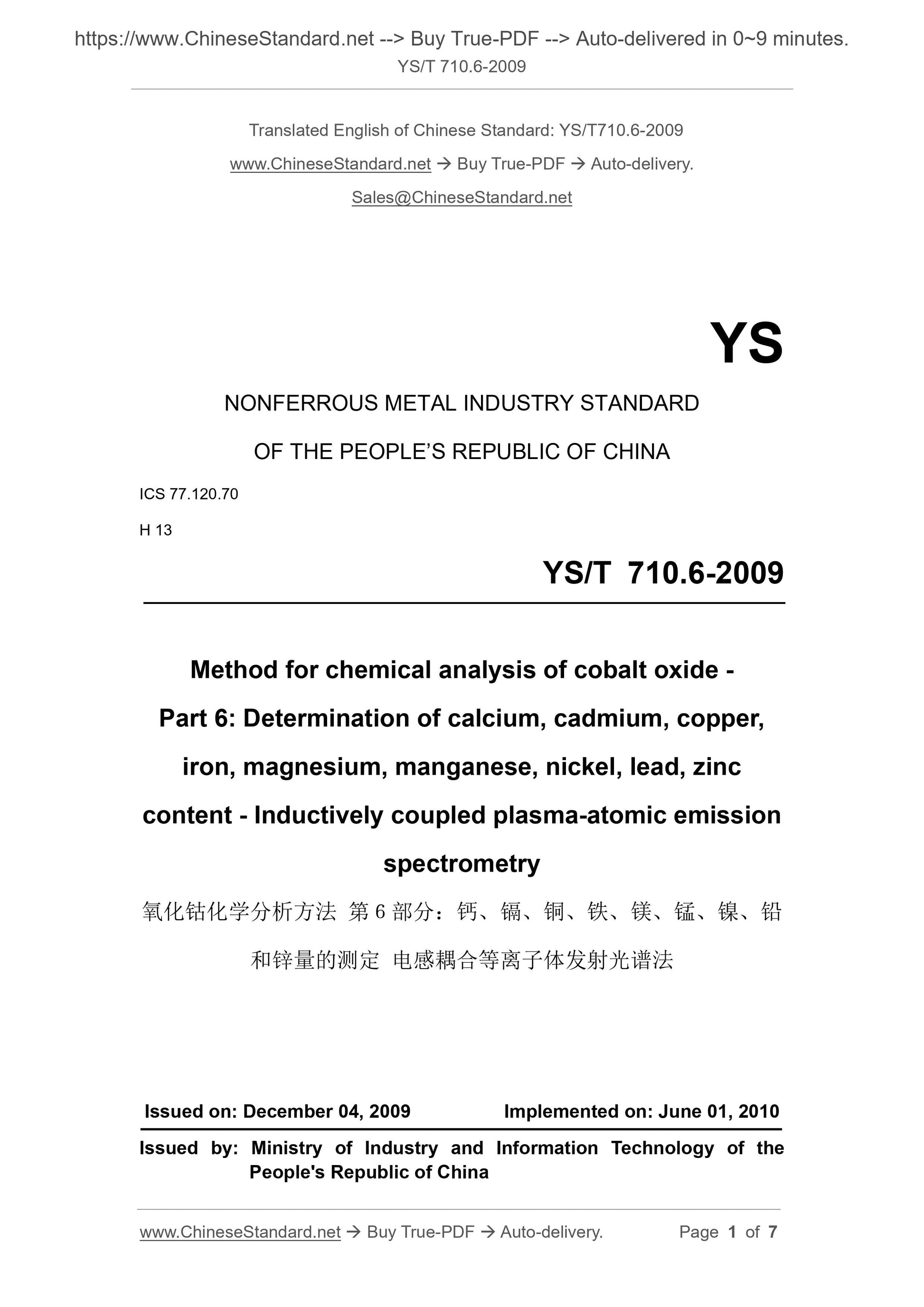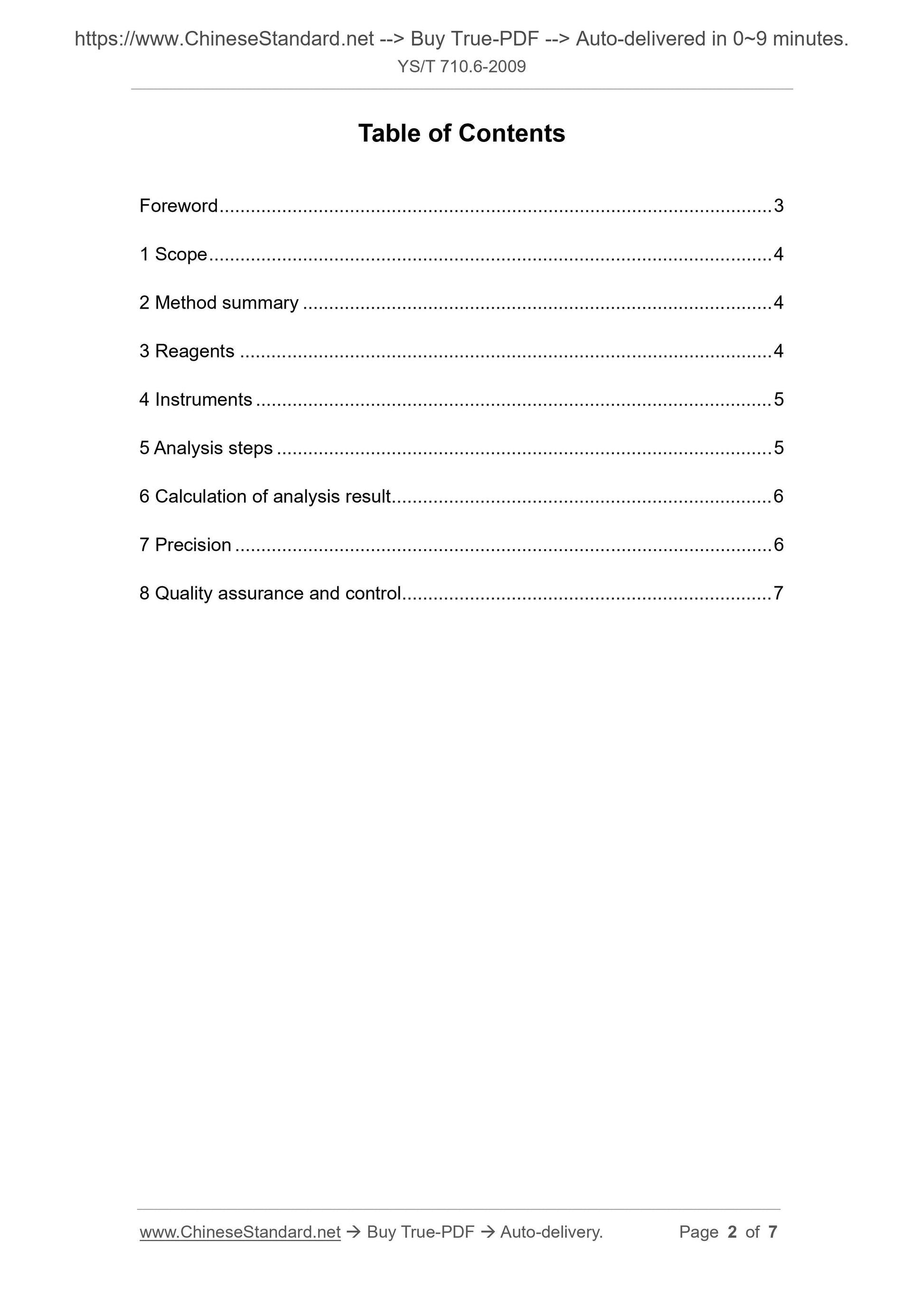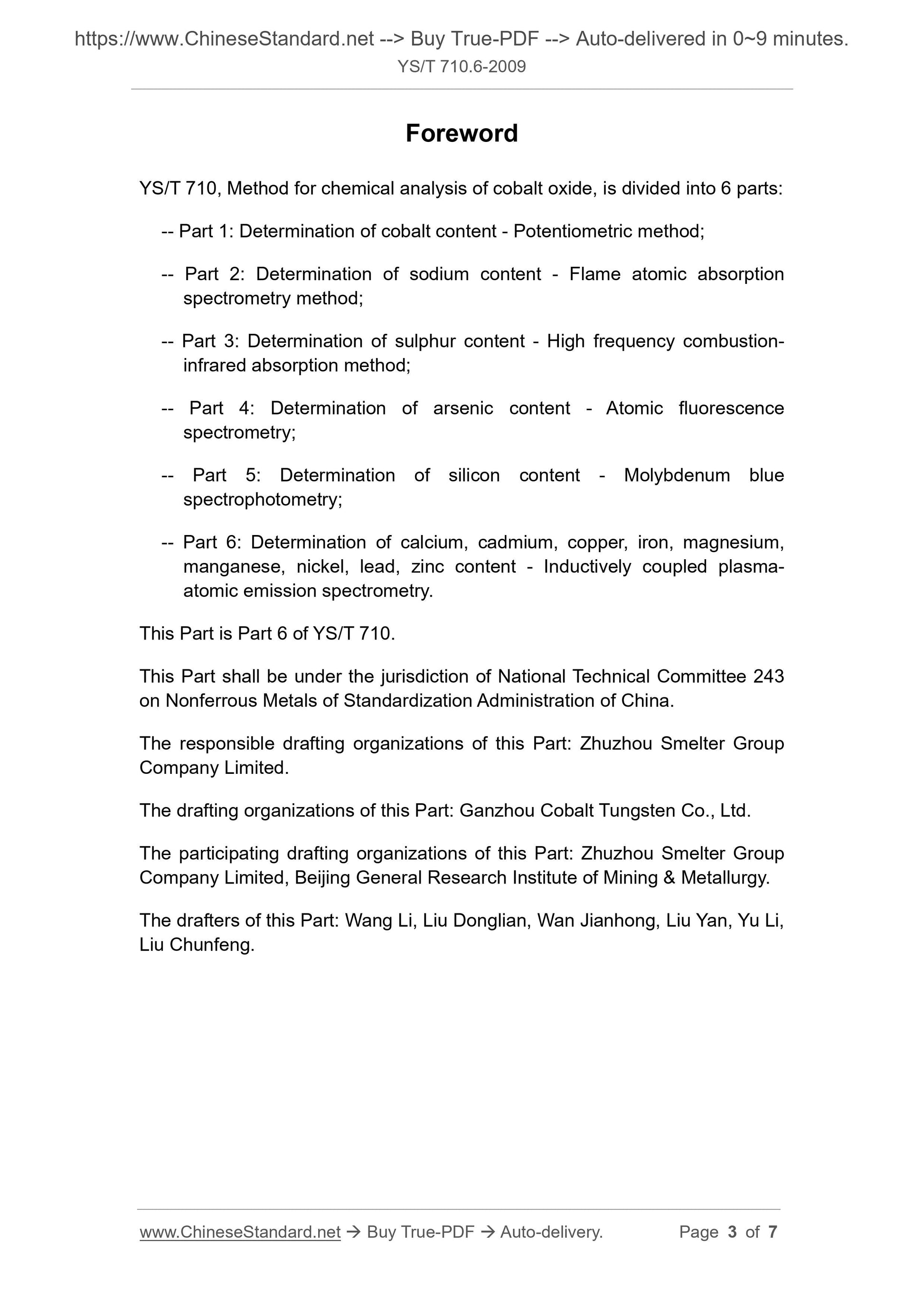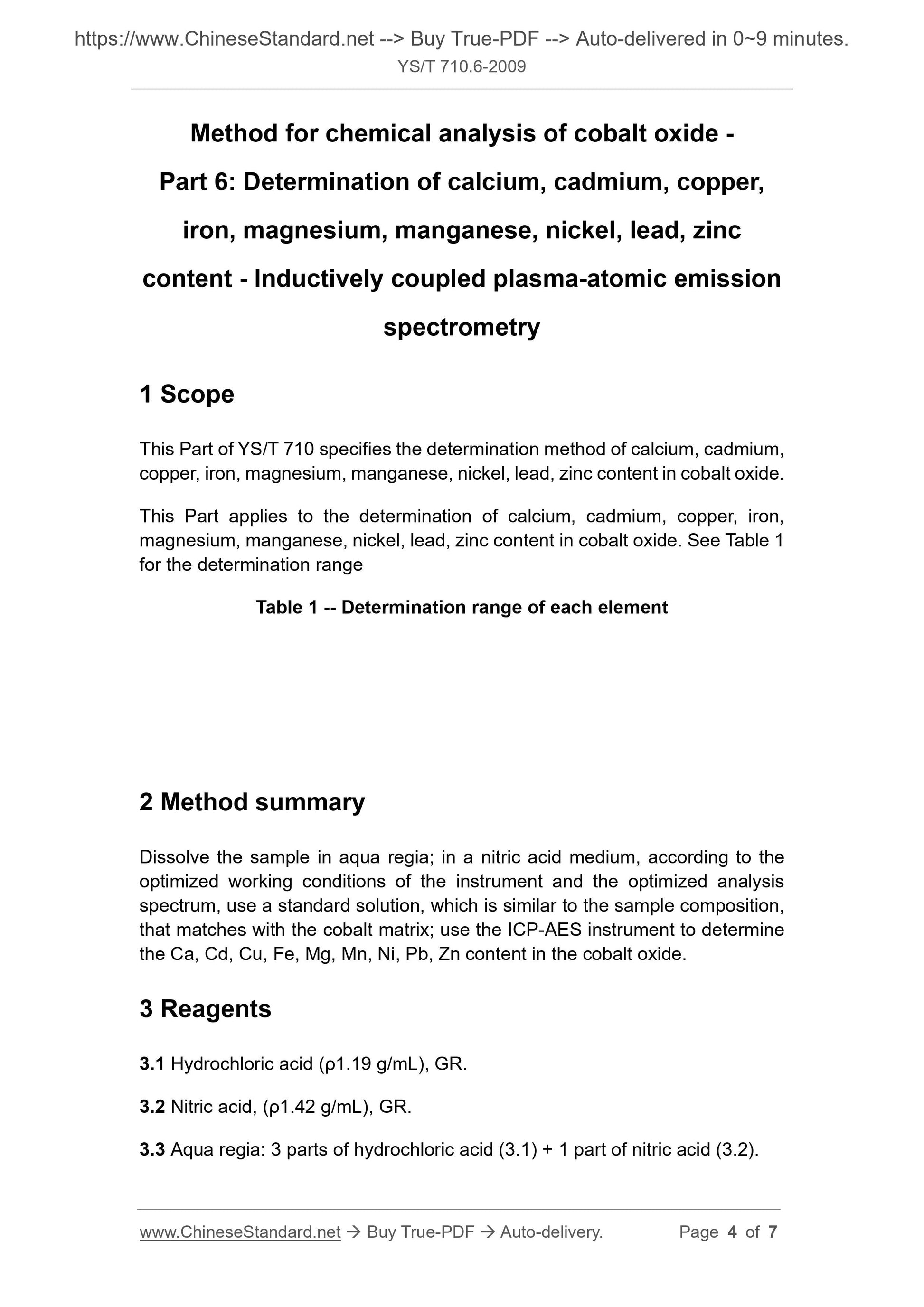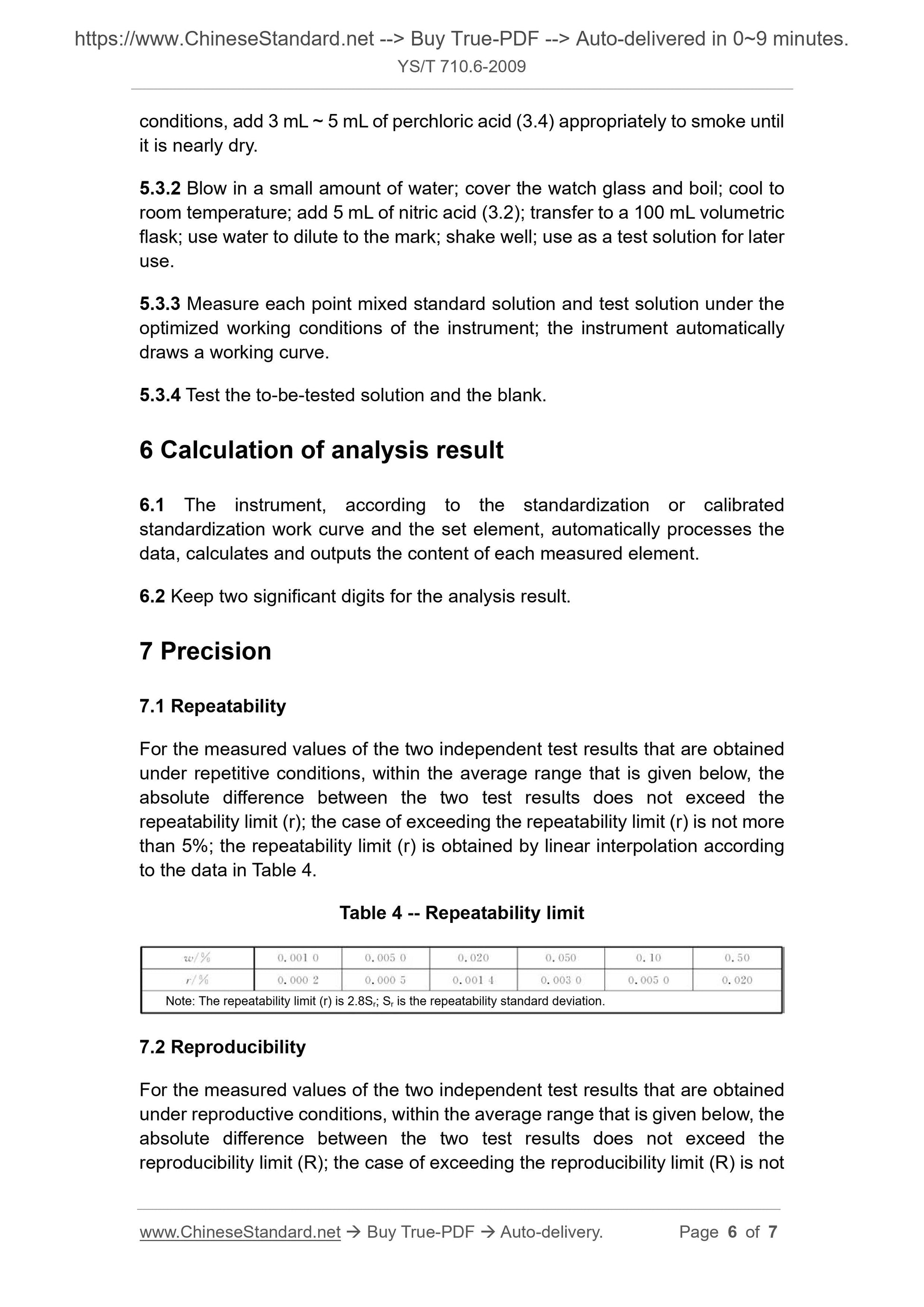1
/
of
5
www.ChineseStandard.us -- Field Test Asia Pte. Ltd.
YS/T 710.6-2009 English PDF (YS/T710.6-2009)
YS/T 710.6-2009 English PDF (YS/T710.6-2009)
Regular price
$110.00
Regular price
Sale price
$110.00
Unit price
/
per
Shipping calculated at checkout.
Couldn't load pickup availability
YS/T 710.6-2009: Method for chemical analysis of cobalt oxide. Part 6: Determination of calcium, cadmium, copper, iron, magnesium, manganese, nickel, lead, zinc content. Inductively coupled plasma-atomic emission spectromertry
Delivery: 9 seconds. Download (and Email) true-PDF + Invoice.Get Quotation: Click YS/T 710.6-2009 (Self-service in 1-minute)
Newer / historical versions: YS/T 710.6-2009
Preview True-PDF
Scope
This Part of YS/T 710 specifies the determination method of calcium, cadmium,copper, iron, magnesium, manganese, nickel, lead, zinc content in cobalt oxide.
This Part applies to the determination of calcium, cadmium, copper, iron,
magnesium, manganese, nickel, lead, zinc content in cobalt oxide. See Table 1
for the determination range
Table 1 -- Determination range of each element
Basic Data
| Standard ID | YS/T 710.6-2009 (YS/T710.6-2009) |
| Description (Translated English) | Method for chemical analysis of cobalt oxide. Part 6: Determination of calcium, cadmium, copper, iron, magnesium, manganese, nickel, lead, zinc content. Inductively coupled plasma-atomic emission spectromertry |
| Sector / Industry | Nonferrous Metallurgy Industry Standard (Recommended) |
| Classification of Chinese Standard | H13 |
| Classification of International Standard | 77.120.70 |
| Word Count Estimation | 6,612 |
| Date of Issue | 2009-12-04 |
| Date of Implementation | 2010-06-01 |
| Regulation (derived from) | MIIT [2009] No. 66 |
| Issuing agency(ies) | Ministry of Industry and Information Technology |
| Summary | This standard specifies the cobalt oxide, calcium, cadmium, copper, iron, magnesium, manganese, nickel, lead and zinc contents method. This standard applies to cobalt oxide by ICP determination of calcium, cadmium, copper, iron, magnesium, manganese, nickel, lead and zinc content. Measuring range in Table 1. |
Share
